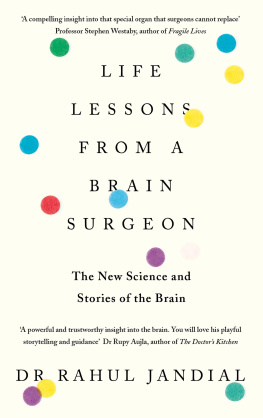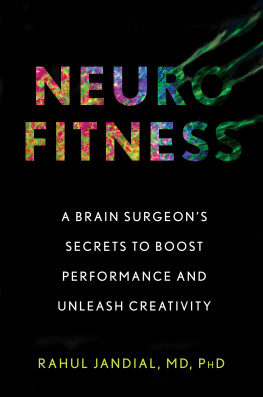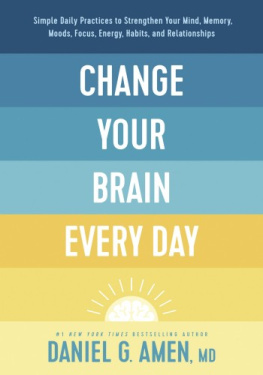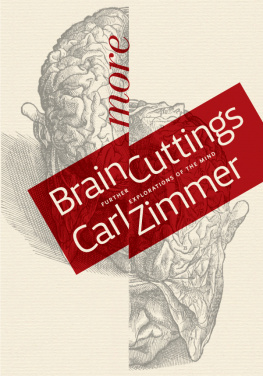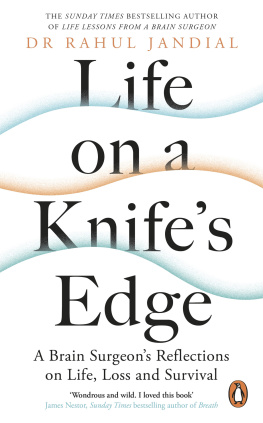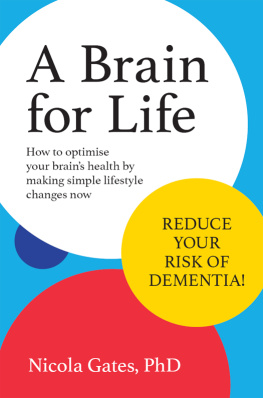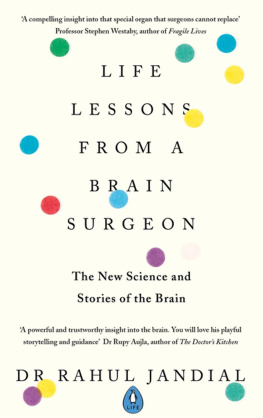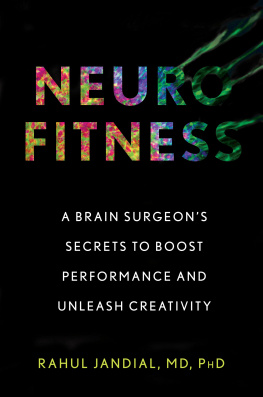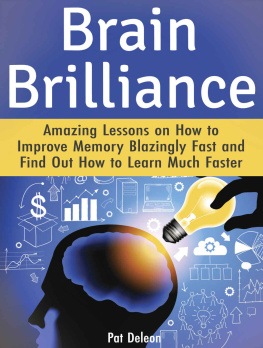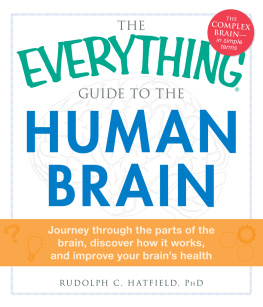PENGUIN LIFE
UK | USA | Canada | Ireland | Australia
India | New Zealand | South Africa
Penguin Life is part of the Penguin Random House group of companies whose addresses can be found at global.penguinrandomhouse.com.

First published in the United States of America by Houghton Mifflin Harcourt 2019
First published in Great Britain by Penguin Life 2019
Copyright Rahul Jandial, 2019
Illustrations Annie Hurley, 2019
The moral right of the copyright holders has been asserted
ISBN: 978-0-241-33871-1
This ebook is copyright material and must not be copied, reproduced, transferred, distributed, leased, licensed or publicly performed or used in any way except as specifically permitted in writing by the publishers, as allowed under the terms and conditions under which it was purchased or as strictly permitted by applicable copyright law. Any unauthorized distribution or use of this text may be a direct infringement of the authors and publishers rights and those responsible may be liable in law accordingly.
Rahul Jandial, MD, P H D
LIFE LESSONS FROM A BRAIN SURGEON
The New Science and Stories of the Brain

To the love of my life Danielle

Prologue
It felt absolutely medieval. This wasnt a maneuver that would work with gradual pressure, like the tightening of a vise. It needed a quick, crushing force. So I used a head holder, with one-inch-long steel pins, to secure the skull to the operating table. That way, if my patient started to move, her head would remain still, and I wouldnt accidentally kill her.
The three metal pins would need to bite down into her skull after puncturing her scalp: one pin in her forehead, two in the back, all connected to a C-shaped clamp. While my assistant held up the patients head from the neck, I explosively captured her cranium inside the steel device. The jarring noise from the metal gears made the students, nurses, and doctors standing behind me in the operating room fall silent. The first of several hundred steps that needed to go smoothly, quickly, and perfectly had just been completed.
So began my first time opening the skull of a living human being. I was a third-year resident at the University of California, San Diego, Department of Neurosurgery. My patient was in her midthirties and had come to the hospitals emergency room two days before, reporting a peculiar weakness and awkwardness in her left arm and hand. An MRI had revealed a bright white abnormality on her brain a tumor the size of a peach.
Many times before, I had stood beside senior neurosurgeons, assisting, observing, and learning. But this was my first time going solo.
Its an odd thing brain surgery. Theres fear, of course, but also awe that youre literally inside somebodys head, which elicits intensity as well as excitement. I dont want to sound indelicate, but for me its a thrill. Some people like skiing, or mountain climbing, or playing poker. I like operating on peoples brains.
The risk is that I will nick a vein and a part of the brain will die. Or I will go in at the wrong spot and wont be able to reach most of the tumor. Or everything will seem to go perfectly during the surgery, but the patient will wake up unable to speak for the rest of their life.
The hope and why I do it is that this woman, who just got married three months ago and has much of her life ahead of her, will have her strength and fine control of her left hand restored as good as new.
Despite having abnormal tissue in her brain, this patient was pretty lucky because the mass wasnt malignant. Her life was not at risk from the tumor, just from me. But as long as the tumor remained and continued to grow, her muscle weakness could worsen and spread. It was nestled in the motor strip of the right parietal lobe a half-inch-wide, seven-inch-long ribbon of brain tissue that sends movement signal to the left side of the body. This particular type of tumor is called a meningioma because it grows from the lining (meninges) of the brain. Since the skull cant stretch, the tumor knuckles into the brain, deforming it, without actually penetrating the tissue. The pressure, however, interferes with the electrical signals, leading to weakness.
After drilling off a circular piece of bone near the top of her skull what brain surgeons call turning the flap I gently sliced with a number-11 scalpel into the dura the thin, cloth-like membrane that protects the brain. I scored and lifted the dura but went no farther.
And there it was. I could see the tumor on the very surface of the brain. In contrast to the glistening opalescence of healthy brain tissue, it was yellow, dull, and irregularly spherical.
I began by entering the center of the tumor, coring it like the yolk of a hard-boiled egg until it was hollow, leaving behind only its tougher rim. Then, I delicately worked its shell away from the surrounding brain, collapsing it into itself. This is the hard part, because the edges have bridging spider-silk-thin fibers, and the surrounding tissue is as soft as pudding. Slowly, methodically, I divided those wisps with a curved eight-inch scissor.
Two hours of doing this under magnification and illumination, and the tumor was out. I bathed the brains surface with sterile water to check for any oozing or dripping blood vessels. Then it was time to close through reverse maneuvers. I reattached the bone flap to the rest of the skull with a thin titanium mesh and tiny plates and screws, stitched the scalp back in place, and finally removed the clamp holding her head still.
Three days later, when her brain was no longer stunned by my invasion, she had full strength back in her left hand and arm, and I knew what I wanted to be great at.
Fifteen years and thousands of operations later, brain surgery is still a thrill unlike any other. My three sons tease me about having gone to school until the thirty-second grade literally twenty years beyond high school but thats what it took to become a brain surgeon and also add a PhD in neurobiology. Even so, I feel like Ive only just glimpsed at the mystery and potential of the human brain. It is my obsession.
These days I not only perform brain surgeries, I also teach medical and graduate students to conduct neuroscience and oncology research in my laboratory at the City of Hope, a cancer treatment and research center in southern California. I travel to countries such as Peru and the Ukraine on surgical missions. I have written ten academic books and more than 100 papers about brain surgery and neuroscience used by medical students, PhD students, and neurosurgeons.
But theres something eating away at me that no amount of surgery or science is going to fix. Its a kind of infection of the mind spread by close contact with television, websites, sensationalist books, and certain companies eager to sell the public on simplistic pseudoscience and nonsense.
Perhaps youve heard claims like this:
- SOME PEOPLE ARE MORE LEFT-OR RIGHT-BRAINED. I explain how this myth was concocted.
- THE GUT IS A SECOND BRAIN. Not really. The brain does project nerves out of the skull to nearly every millimeter of your body, including an extensive network of nerves in your guts that monitor your gastrointestinal tract. But many patients have undergone multiple variations of near-total bowel removal without demonstrating any attributable mental dysfunction.
Next page
